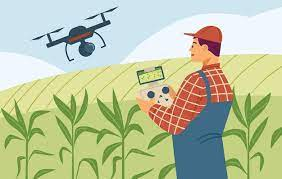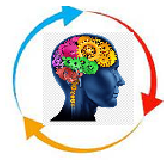Agriculture and Agri-foods Industry
AI and satellite data integration have the potential to revolutionize farming practices by offering farmers valuable insights into their geographical areas, enhancing weather predictions, and augmenting various agricultural processes.
Here's an explanation of how satellite data and AI could impact farmers in the future:
Here's an overview of how AI is impacting skills in agriculture and predictions for the future:

1. Precision Farming and Geographical Insights
Current Impact: Satellite data is already used to provide detailed information
about land characteristics, including soil composition, moisture levels, and topography. AI algorithms
can process this data to generate customized recommendations for planting, irrigation, and soil
management.
Future Prediction: In the coming years, AI will become more proficient at
analyzing satellite imagery. Farmers will have access to highly accurate and real-time geospatial
data, allowing them to make precise decisions about crop selection, planting schedules, and resource
allocation based on their specific geographical area's conditions.
2. Weather Predictions and Climate Adaptation
Current Impact: AI is used to improve weather forecasting by analyzing
historical weather data and satellite observations. This helps farmers prepare for extreme weather
events and optimize planting and harvesting schedules.
Future Prediction: AI-driven weather prediction models will become increasingly
accurate. Farmers will rely on these predictions to adapt to changing climate patterns, reduce risks
associated with unpredictable weather, and make informed decisions about crop management and resource
allocation.
3. Pest and Disease Monitoring
Current Impact: AI can analyze satellite imagery to detect early signs of pest
infestations or disease outbreaks in crops. This early warning system helps farmers take preventive
measures.
Future Prediction: AI's ability to detect anomalies in satellite data will
improve. Farmers will receive timely alerts about potential threats to their crops, enabling them to
implement targeted interventions and reduce crop losses.
4. Resource Efficiency and Sustainability
Current Impact: AI-powered systems use satellite data to optimize irrigation,
fertilizer application, and other resource usage. This reduces waste, conserves resources, and
promotes sustainable farming practices.
Future Prediction: As AI algorithms become more advanced, they will fine-tune
resource management further. Farmers will be able to maximize yields while minimizing environmental
impact, aligning with increasingly stringent sustainability goals.
5. Crop Health Monitoring
Current Impact: AI can process satellite imagery to assess crop health by
identifying stress factors such as nutrient deficiencies or water stress.
Future Prediction: AI will provide farmers with even more detailed and actionable
insights into crop health. Early detection of issues will become the norm, allowing farmers to apply
treatments precisely when and where needed.
6. Yield Prediction and Market Planning
Current Impact: AI analyzes satellite data and historical crop yields to predict
future harvests. This helps farmers plan for market fluctuations and adjust their production
accordingly.
Future Prediction: AI's predictive capabilities will become more accurate,
aiding farmers in optimizing their planting and harvesting strategies to meet market demands
efficiently.
7. Sustainable Land Management
Current Impact: Satellite data and AI are used to monitor land use changes and
deforestation. This assists in enforcing sustainable land management practices.
Future Prediction: AI will play a central role in monitoring and preserving
agricultural land. It will contribute to ensuring that farming practices remain in harmony with
environmental conservation goals.
Looking Ahead
In the future, the integration of AI and satellite data will empower farmers with unprecedented insights and decision-making capabilities. This technological synergy will enable them to not only increase agricultural productivity and profitability but also contribute to sustainable and environmentally responsible farming practices. As AI and satellite technology continue to advance, farmers will need to adapt and acquire the necessary skills to harness these capabilities effectively, marking a transformative era in agriculture.
Contact Us
Contact us today for a free consult on making your digital initiatives more workforce-ready and responsive.
